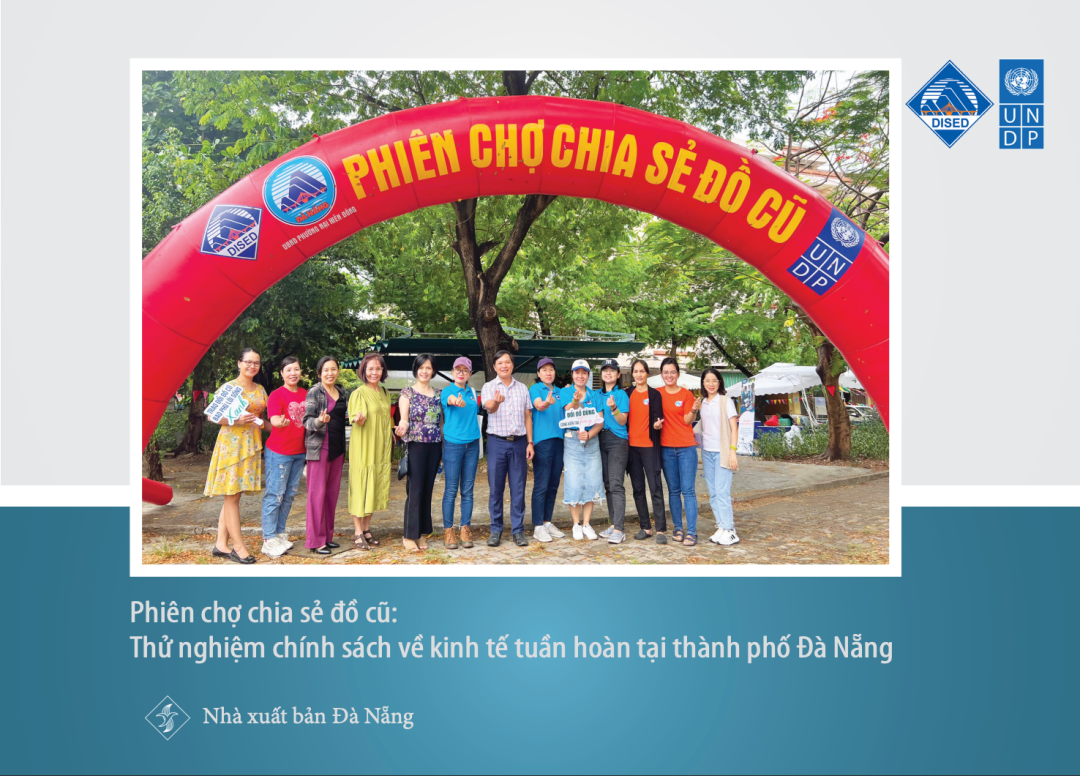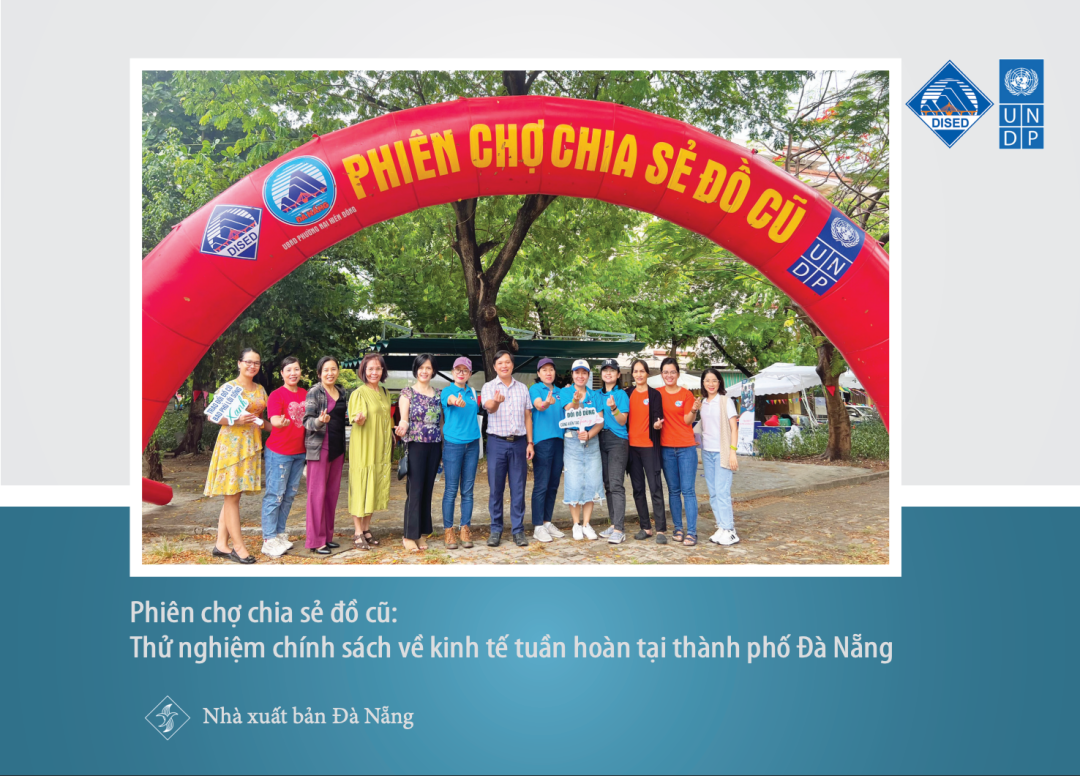Disclaimer:
Please be aware that the content herein has not been peer reviewed. It consists of personal reflections, insights, and learnings of the contributor(s). It may not be exhaustive, nor does it aim to be authoritative knowledge.
Overview
Prepared by (Name of the experimenter)
Tran Huong Giang – Head of Experimentation
On date (Day/Month/Year)
14/01/2024
Current status of experimental activity
Completed
What portfolio does this activity correspond to? If any
Circular Economy
What is the frontier challenge does this activity responds to?
Apart from sharing old items through gifting or donating to family and friends, in Da Nang city, there are various channels available for buying, selling, or donating used items. However, these trading avenues are decentralized, and even when they are centralized, there is a lack of support from local authorities in terms of promotional and advocacy efforts.
What is the learning question(from your action learning plan) is this activity related to?
Will the promotion of sharing used items be enhanced when centrally organized and supported by local authorities through promotional and advocacy efforts?
Please categorize the type that best identifies this experimental activity:
Quasi experimental (Analytical, observations, etc)
Which sector are you partnering with for this activity? Please select all that apply
Public Sector
Please list the names of partners mentioned in the previous question:
Da Nang Institute for Socio - Economic Development
People's Committee of Nai Hien Dong ward
Design
What is the specific learning intent of the activity?
To shift the perception that solely increasing awareness of recycling activities can enhance the waste classification rate, it is imperative for the government to implement targeted propaganda efforts in this regard.
What is your hypothesis? IF... THEN....
H1: Participation in the sharing of old items by the residents of Da Nang city increases when organized centrally at one location.
H2: Participation in the sharing of old items by the residents of Da Nang city significantly increases when organized centrally at one location, especially with the involvement of local authorities in propaganda and advocacy efforts.
Does the activity use a control group for comparison?
No, it does not use a control group
How is the intervention assigned to different groups in your experiment?
Non-random assignment
Describe which actions will you take to test your hypothesis:
- Choose a common place to live
- Organize the first market session that meets the conditions for organizing it concentrated in one location
- Organize a second market meeting that meets the conditions for organizing it concentrated in one location and with the participation of local authorities in propaganda and advocacy.
What is the unit of analysis of this experimental activity?
Individual
Please describe the data collection technique proposed
Conducting in-depth interviews with individuals to assess the objectivity and appropriateness of the hypothesis, while also gaining insights into the behaviors associated with sharing and consuming used goods.
Engaging in experimental measurement, which involves constructing and refining questionnaires, administering surveys, analyzing collected data, and generating comprehensive reports on the results.
What is the timeline of the experimental activity? (Months/Days)
60 Days
Results
Was the original hypothesis (If.. then) proven or disproven?
The original hypothesis was partially proven. The experiment showed that the second market, which had the participation of the local authorities in communication and mobilization, had more people joining the sharing activities than the first market, which only had a centralized location. However, the difference was not large, and there were other factors that might have affected the results, such as weather, time, and location.
Do you have observations about the methodology chosen for the experiment? What would you change?
The methodology chosen for the experiment was a quasi-experimental design with two groups: one with the intervention (the second market) and one without (the first market). This design was suitable for testing the causal effect of the intervention on participants' behavior. However, some improvements are:
Using a control group that did not receive any intervention to compare with the two experimental groups and isolate the effect of other factors.
Randomizing the assignment of the participants to the groups to reduce selection bias and increase internal validity.
Conducting a pre-test and a post-test to measure the changes in the behavior and attitudes of the participants before and after the intervention.
Using multiple methods of data collection and analysis, such as surveys, interviews, observations, and focus groups, to triangulate the findings and increase reliability and validity.
From design to results, how long did this activity take? (Time in months)
From design to results, this activity took about two months. The experiment stated that the first market was held on June 19, 2022, and the second market was held on July 10, 2022.
What were the actual monetary resources invested in this activity? (Amount in USD)
5,000 USD
Does this activity have a follow up or a next stage? Please explain
This activity did have a follow-up or a next stage, which was a workshop to summarize the results of the policy experiment and to propose a model for scaling up. The experiment stated that the workshop was held on July 19, 2022, with the participation of the representatives from the Da Nang Institute of Socio-Economic Development (DISED), the United Nations Development Programme (UNDP), the Nai Hien Dong ward authorities, and some other stakeholders. The workshop aimed to share the findings and lessons learned from the experiment, to discuss the challenges and opportunities for developing a circular economy in Da Nang, and to suggest some recommendations for replicating and expanding the model of the sharing market to other locations and contexts.
Learning
https://vietnamcirculareconomy.vn/ki%E1%BA%BFn-th%E1%BB%A9c/phien-cho-chia-se-do-cu-thu-nghiem-chinh-sach-ve-kinh-te-tuan-hoan-tai-thanh-pho-da-nang/
What do you know now about the action plan learning question that you did not know before? What were your main learnings during this experiment?
Some of the main learnings from the experiment were:
The sharing market was an effective way to promote the reuse of old goods and to raise awareness and interest in the circular economy among the residents.
The participation of the local authorities in communication and mobilization was helpful, but not sufficient, to increase the participation of the residents in the sharing activities. Other factors, such as the convenience, accessibility, and attractiveness of the market, also played a role.
The sharing market could be improved by providing more incentives, feedback, and recognition for the participants, by diversifying the types and quality of the goods, by creating more interactions and connections among the participants, and by integrating the market with other activities and services related to the circular economy.
What were the main obstacles and challenges you encountered during this activity?
Weather conditions: The second market day was affected by heavy rain and drizzle, which reduced the number of participants and the duration of the event.
Lack of awareness and motivation: Some people did not understand the purpose and benefits of sharing used goods or did not want to spend time and effort to sort and transport their items to the market.
Logistics: Some people had difficulties in registering for a booth, finding a suitable location, or arranging the transportation of their goods. Some people also complained about the lack of parking space, security, or sanitation at the market venue.
Quality and quantity of goods: Some people brought low-quality or damaged goods that were not suitable for sharing or reuse. Some people also brought too many or too few goods, which affected the balance and diversity of the market.
Who at UNDP might benefit from the results of this experimental activity? Why?
The Climate Change and Environment Unit
Who outside UNDP might benefit from the results of this experiment? and why?
The results of this experiment could also benefit other actors outside UNDP, such as:
The residents of Da Nang and other cities in Vietnam, who could enjoy the environmental, social, and economic benefits of the circular economy, such as reducing waste, saving resources, creating jobs, and improving well-being.
The local authorities and stakeholders in Da Nang and other cities in Vietnam, who could learn from the experience and lessons of the experiment and apply them to their own contexts and challenges.
The researchers and practitioners in the field of circular economy and policy experimentation, could use the data and findings of the experiment to advance their knowledge and practice.


 11Sustainable cities and communities
11Sustainable cities and communities 13Climate action
13Climate action


Comments
Log in to add a comment or reply.